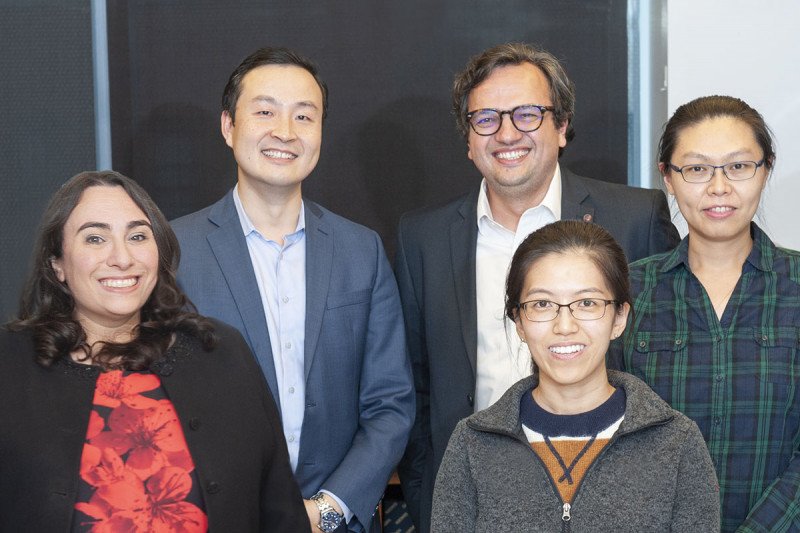
The recent accelerated approval of sotorasib (LumakrasTM) was considered significant because the drug obstructs a cancer-causing protein that for decades scientists thought was “undruggable.” Sotorasib received accelerated approved from the US Food and Drug Administration (FDA) in May 2021 for the treatment of people with advanced non-small cell lung cancers caused by a gene mutation called KRAS G12C.
Unfortunately, however, most patients who initially respond to the drug eventually develop resistance to it. Sotorasib creates a roadblock to cell growth, but the cancer figures out a way to get around it, and the tumors start growing back. Other patients never respond at all.
A new paper from Memorial Sloan Kettering Cancer Center researchers reports that resistance to sotorasib and other similar drugs targeted to the KRAS G12C protein does not always happen in the same way. Instead, resistance can be caused by different molecular changes. The findings, published November 10, 2021, in Nature, have implications for developing new drugs to counteract this resistance, as well as for identifying drugs that may work for patients who don’t ever respond to sotorasib.
“We were surprised that we did not find one dominant mechanism of resistance,” says senior and corresponding author Piro Lito, a physician-scientist in MSK’s Human Oncology and Pathogenesis Program. “Instead, resistance is multifactorial. These findings illustrate why it’s so important to continue to study the long-term response to this drug.”
Dr. Lito and MSK thoracic oncologist Bob Li, a co-senior author of the Nature paper, were both active in the phase 1/phase 2 trial that led to sotorasib’s approval.
Taking a New Look at an Old Problem
Acquired drug resistance is not a new problem. Since targeted therapies were first used in the early 2000s, doctors have observed that most patients who initially have a good response to these drugs eventually stop responding. “Resistance often occurs through secondary mutations that prevent the drug from binding to the target, or from alterations in other proteins that stimulate cell growth,” says Yulei Zhao, a research fellow in Dr. Lito’s lab and the study’s lead author. In many cases, however, resistance can be overcome by combining other drugs that act on different parts of the mutant protein.
“The development of sotorasib allowed us to give new hope to patients whose cancers are caused by the KRAS G12C mutation,” says co-first author Yonina Murciano-Goroff, a medical oncologist who specializes in early-phase clinical trials. “Making sure that the hope we give them is both realistic and sustainable requires us to address resistance.”
Even before sotorasib received accelerated FDA approval, Dr. Lito and his colleagues were studying how resistance to drugs that block KRAS G12C developed. One trick that cancer cells use to evade sotorasib is to change the shape of the KRAS G12C protein. In a previous study published in Nature in January 2020, they reported that this adaptive response could be minimized by adding a second drug that kept the protein in its druggable state. This work was done in the lab, on cells growing in a dish (what’s called preclinical work).
The current study took a closer look at how resistance arises in patients. The investigators matched pre- and post-treatment tumor samples from 43 patients who had been treated with sotorasib. In the 27 patients who developed resistance, they found new alterations in multiple genes, including NRAS, BRAF, EGFR, and MYC. These additional changes allowed the tumors to start growing again, even as sotorasib continued to block the KRAS G12C protein.
“There are two possible explanations for why this happens,” Dr. Lito says. “These alterations can exist in some cells even before treatment, or they can arise during treatment. In both cases, cells with the resistance alteration have a growth advantage during treatment and take over.”
“While the mutations we identified in the preclinical models were all different, they follow a similar theme and are able to cause resistance by reactivating the growth pathway,” says co-first author Jenny Xue, a student in the Tri-Institutional MD-PhD Program of MSK, Weill Cornell Medicine, and the Rockefeller University. “The same will likely be true in patient samples as we gather more data, where themes may emerge among a range of resistance mutations.”
Optimizing Therapy Based on Secondary Mutations
Dr. Lito explains that understanding what causes resistance to happen will enable better treatment approaches: “It’s unlikely that a single approach will address all resistance mechanisms, since there is not a single dominant genetic event that is responsible. The best choice of therapy will likely depend on the type of resistance alteration.”
In some cases, drugs already exist that can target the secondary mutations that arise. It’s possible that adding these drugs to sotorasib may prolong the length of time that patients respond. This is something the researchers are currently studying in a phase 1 clinical trial of sotorasib combination therapies. Liquid biopsy tests like MSK-ACCESS® may enable researchers to detect these secondary mutations early and use them to match patients with additional treatments.
Dr. Murciano-Goroff notes the advantages of doing this kind of research at MSK. “This translational paper represents a true ‘bench to bedside and back’ collaboration between laboratory scientists and clinician-researchers to better define mechanisms of resistance,” she says. “We are fortunate at MSK to have extensive next-generation sequencing data, including from MSK-IMPACTTM, which contributed to our ability to put our findings into context.”
Agnes Ang and Russell Lipford, investigators at Amgen, which makes sotorasib, were also heavily involved in the study as co-first and co-senior authors, respectively.
- MSK researchers have learned that resistance to sotorasib can develop in many different ways.
- Sotorasib is a new drug for lung cancer that targets a mutation called KRAS G12C.
- Clinical trials are looking at whether combining additional targeted drugs with sotorasib may prolong the length of time that patients respond to it.






